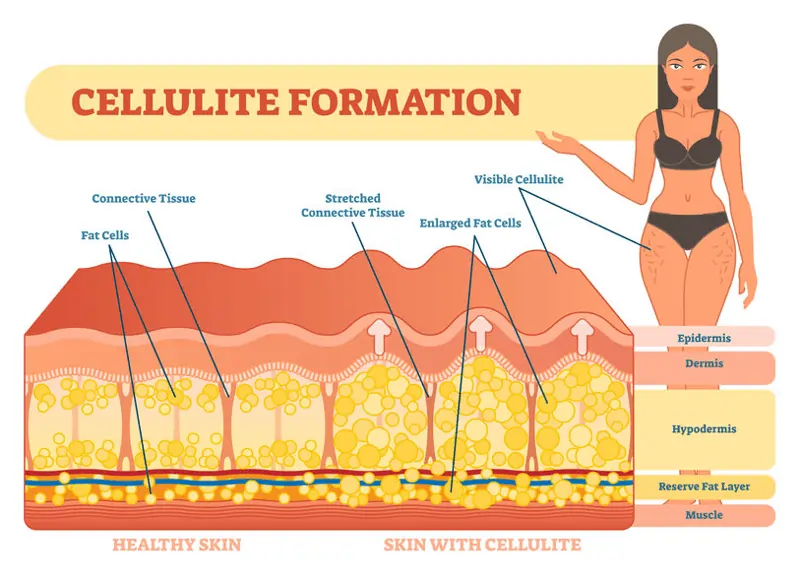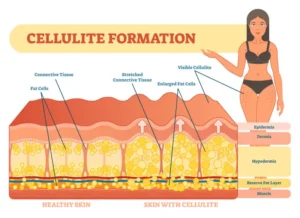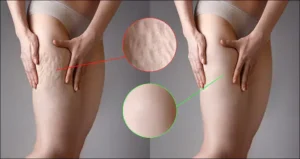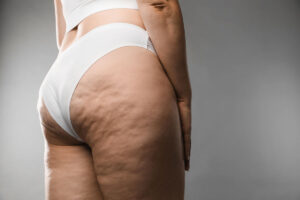Understanding Cellulite and Its Prevalence Bexley
Cellulite is a widespread cosmetic condition characterized by a dimpled skin texture, predominantly affecting women, and is often described as having an “orange peel” or “cottage cheese” appearance. Research indicates that about 80-90% of women experience some degree of cellulite after reaching puberty, which can frequently lead to significant concerns regarding body image and self-esteem. For example, many women express dissatisfaction with their appearance, particularly when cellulite is visible on areas such as the thighs or buttocks. This condition is not simply a reflection of excess weight; rather, it arises from a complex interplay between body composition, fat distribution, and the structural characteristics of the skin and underlying connective tissue.
While cellulite poses no direct health risk, it can result in psychological distress for those affected, particularly if they feel pressured by societal beauty standards. Women often share experiences of feeling embarrassed or self-conscious about their cellulite, leading to avoidance of certain social situations, such as beach outings or wearing shorts. The visibility of cellulite is influenced by various factors, including genetics and hormonal changes, which makes it a common yet misunderstood issue among women of different ages. Understanding that cellulite is a normal condition can help foster a more positive self-image and encourage acceptance of diverse body types among women, thus reducing the stigma associated with this prevalent condition.
Causes of Cellulite Bexley
The development of cellulite is influenced by multiple factors, with hormonal changes playing a significant role, particularly the effects of estrogen. This hormone is crucial because it regulates fat storage and distribution in the body, leading to a higher propensity for cellulite in women compared to men. Hormonal fluctuations that occur during various life stages, such as puberty, pregnancy, and menopause, further increase the risk of developing cellulite as fat distribution patterns shift and connective tissue becomes less resilient. For instance, many women notice an increase in cellulite during menopause due to a decrease in estrogen levels, which can alter skin elasticity and fat deposition.
Genetic predispositions also play a pivotal role in the development of cellulite, affecting individual metabolism and fat distribution patterns. Those with a family history of cellulite may be more likely to experience it themselves, as certain genetic markers can influence how fat is stored and how connective tissue is structured. For example, studies have shown that women with relatives experiencing cellulite are more likely to notice similar issues. Structurally, cellulite occurs when fat deposits push against the connective tissue beneath the skin, leading to the characteristic lumpy appearance known to many. Check Our HI-EMT Muscle Toning Treatment
This phenomenon is often exacerbated by factors such as poor circulation, which can hinder the delivery of essential nutrients and impair the proper functioning of connective tissue, ultimately making the skin appear dimpled. Moreover, weight fluctuations can further accentuate the visibility of cellulite; gaining weight can increase fat deposits, while losing weight can lead to reduced skin elasticity, making it a complex condition to manage.

Areas Commonly Affected Bexley
Cellulite typically affects the thighs, buttocks, and hips, which are the primary areas where it is most visible. These regions are particularly prone to the dimpled appearance characteristic of cellulite due to the accumulation of fat beneath the skin and the structure of connective tissues that tether the skin to the underlying muscle. Many women report noticing cellulite on their outer thighs and buttocks, where the skin may take on a lumpy texture, especially after weight gain or hormonal changes. The abdomen and arms are also common locations, with women frequently expressing concern about the appearance of cellulite in these areas as well.
The presence of cellulite in these regions can be attributed to a combination of factors, including hormonal influences, body composition, and genetic predisposition. Interestingly, the likelihood of developing cellulite can also be influenced by lifestyle factors; for example, individuals who lead a sedentary lifestyle may notice more pronounced cellulite in these areas due to decreased muscle tone and increased fat accumulation. The areas affected by cellulite often correlate with higher fat deposits and lower muscle tone, meaning that regions with less muscular support are more susceptible to its formation.
This is particularly relevant for individuals who may not engage in regular physical activity, as a lack of exercise can contribute to decreased muscle tone in these areas. Additionally, variations in the density of connective tissue across different parts of the body also play a role in determining where cellulite forms. For instance, the skin on the thighs may have a different structural composition compared to the skin on the arms, influencing the visibility of cellulite. Interestingly, some individuals may notice cellulite developing on less common areas such as the breasts and lower abdomen, which can further complicate the understanding of this condition.
Cellulite in Women vs. Men Bexley
Cellulite is notably more prevalent in women, primarily due to differences in fat distribution patterns and the structure of connective tissue. Research indicates that a staggering 80-90% of women experience cellulite at some point in their lives, particularly post-puberty, while less than 10% of men are affected by this cosmetic condition, highlighting a significant gender disparity. This disparity can be attributed in part to hormonal fluctuations that women experience throughout their lives. For example, women often notice a change in the appearance of cellulite during menopause due to a decrease in estrogen levels, which can affect how fat is stored and the overall elasticity of the skin.
Conversely, men typically possess thicker skin and a different pattern of fat distribution, which contributes to the lower rates of cellulite in their population. In men, fat is usually distributed more evenly throughout the body and is less likely to push against the connective tissue in a way that creates the dimpled appearance associated with cellulite. For instance, men generally have a higher proportion of muscle mass, which can mask the visibility of cellulite even if it is present. This anatomical difference is further compounded by the fact that men typically have a greater amount of collagen in their skin, providing more structural support and making it less prone to the dimpling associated with cellulite. Understanding these gender differences is essential not only for recognising the prevalence of cellulite but also for informing treatment options and lifestyle strategies that may be more effective for women compared to men. Some studies suggest that men may develop a different type of lipodystrophy that does not present with the same visible dimpling, further complicating the conversation around cellulite and body composition.
Stages of Cellulite
Cellulite is graded based on its severity, ranging from Grade 1 (mild) to Grade 3 (severe), with each grade reflecting the visibility and depth of dimpling in the skin. This classification system plays a vital role in assessing the progression of cellulite and determining appropriate treatment options. For example, Grade 1 cellulite may only be noticeable when the skin is pinched, often appearing as subtle dimpling that can be easily overlooked by both the individual and healthcare professionals. In contrast, Grade 3 cellulite is marked by pronounced dimpling and a “mattress-like” appearance, which can be observed without any manipulation of the skin, thereby indicating a more advanced stage of the condition.
Several factors can influence the appearance of cellulite over time, including fluctuations in weight, hormonal changes, and the natural ageing process. As individuals age, skin elasticity diminishes, and fat distribution can change, leading to an increased prominence of cellulite. For instance, a woman who may have had smooth skin in her twenties may start to notice cellulite in her thirties or forties as her body fat distribution changes and skin loses firmness. Regular assessments are essential to monitor these changes, as they can provide insights into the effectiveness of treatment strategies and lifestyle modifications.
Both visual and tactile evaluations are crucial for establishing the grade of cellulite; healthcare professionals often use these assessments to guide treatment decisions effectively. For instance, a practitioner may recommend more aggressive treatments for someone with Grade 3 cellulite compared to someone with only Grade 1, tailoring the approach to the severity of the condition. Understanding the stages of cellulite can also empower individuals to make informed decisions about their treatment options and lifestyle changes, fostering a sense of control over their body image.
Impact of Body Composition Bexley
The visibility of cellulite is closely linked to an individual’s body composition, particularly body fat percentage. Higher levels of body fat often correlate with increased visibility of cellulite due to the enhanced pressure exerted on the connective tissue. For example, individuals with a body fat percentage above the healthy range may find that their cellulite becomes more pronounced, particularly in areas like the thighs and buttocks. This is because the excess fat pushes against the skin, creating the characteristic dimpling effect that defines cellulite. Furthermore, factors such as genetics and hormonal fluctuations can also influence how body fat is distributed, which in turn affects cellulite visibility.
Muscle tone plays a critical role in the appearance of cellulite; individuals with greater muscle tone may experience less noticeable cellulite, as stronger muscles can provide better support for the skin. For instance, someone who regularly engages in strength training may find that their cellulite is less visible compared to someone with similar body fat levels but lower muscle tone. Body composition analysis can further elucidate fat distribution patterns, helping individuals identify areas where cellulite is more likely to develop. Those with a higher proportion of subcutaneous fat, which is fat stored just beneath the skin, are generally more prone to noticeable cellulite. This underscores the importance of not only focusing on weight loss but also on building muscle to improve overall body composition and potentially reduce the visibility of cellulite. See Our Cellulite Treatment for Arms
Additionally, the relationship between body composition and cellulite can also be seen in the context of lifestyle behaviours. For instance, individuals who adopt a sedentary lifestyle and neglect their physical fitness may notice an increase in cellulite visibility over time. Conversely, those who engage in regular physical activity and maintain a balanced diet are likely to have a more favourable body composition, which can help mitigate the appearance of cellulite. This highlights the importance of a holistic approach to body composition, where both diet and exercise play significant roles in shaping an individual’s overall health and appearance.
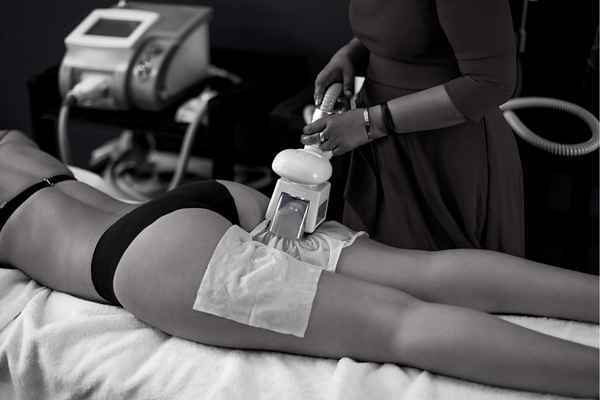
Lifestyle Factors and Cellulite Bexley
Diet plays a crucial role in the development and visibility of cellulite, with a notable correlation between a high intake of processed foods and the exacerbation of this condition. Processed foods often contain unhealthy fats and sugars that can lead to weight gain and poor skin health, both of which contribute to the formation of cellulite. For example, diets rich in trans fats can impair circulation, which is essential for maintaining healthy skin and connective tissue. Conversely, a balanced diet that includes whole foods, such as fruits, vegetables, and lean proteins, can support overall skin health and potentially reduce the appearance of cellulite. For instance, foods high in antioxidants, like blueberries and green leafy vegetables, can help combat oxidative stress and promote healthy skin.
A sedentary lifestyle is another significant risk factor for developing cellulite. Regular physical activity not only helps to maintain a healthy weight but also improves muscle tone, which can enhance skin texture and diminish the lumpy appearance associated with cellulite. Activities such as running, cycling, and strength training are particularly effective, as they promote blood circulation and fat loss in targeted areas. For instance, engaging in strength training can build muscle in areas prone to cellulite, thereby providing a firmer foundation that can help improve the overall appearance of the skin. Additionally, lifestyle choices such as smoking and excessive alcohol consumption can further worsen the condition. Smoking can adversely affect circulation and skin elasticity, while alcohol can lead to dehydration, both of which contribute to the visibility of cellulite. Ensuring adequate hydration is essential for maintaining skin elasticity; dehydration can cause the skin to lose its firmness, making cellulite more pronounced. Moreover, stress is often an overlooked factor, as it can trigger hormonal imbalances that exacerbate the appearance of cellulite by affecting fat distribution and skin health.
Treatment Options
There are several treatment options available for cellulite, ranging from FDA-approved procedures to non-invasive methods. Notable FDA-approved treatments include Cellfina, Cellulaze, and Qwo, each designed to target the fibrous bands beneath the skin that contribute to the dimpled appearance associated with cellulite. For instance, Cellfina uses a minimally invasive technique to release the tension in these bands, resulting in smoother skin. However, the effectiveness of these treatments can vary from person to person, making it crucial for individuals to consult with a specialist to determine the best approach for their unique situation.
In addition to these invasive options, non-invasive methods such as laser therapy and acoustic wave therapy have gained popularity for their ability to reduce the visibility of cellulite without the need for surgery. These treatments work by stimulating collagen production and improving skin elasticity, which can help smooth out the skin’s surface. Despite the potential benefits, it is essential to recognise that combining these treatments with lifestyle changes, including a balanced diet and regular exercise, is vital for achieving optimal results. For example, adopting a diet rich in whole foods while engaging in consistent physical activity can enhance the overall appearance of the skin and support the effectiveness of the treatments. While topical treatments, such as creams containing caffeine or retinol, may provide some temporary relief, they should not be viewed as a permanent solution, as their effects are not long-lasting.
Moreover, the advancements in cellulite treatments have led to the development of newer therapies that target the fibrous septa that cause dimpling. These treatments show promise for more durable improvements, but patient assessment is crucial, focusing on individual factors contributing to cellulite appearance, such as skin laxity and fat deposition. For instance, a comprehensive approach that combines multiple treatment modalities with lifestyle modifications may yield the best results. Ultimately, while various treatments can offer visible improvements, sustainable changes often stem from a commitment to healthy lifestyle modifications that promote overall well-being.
Myths and Misconceptions
There are many myths surrounding cellulite, one being the belief that dieting alone can eliminate it; this misconception fails to address the underlying structural issues of connective tissue. Even individuals who maintain a healthy diet can still experience cellulite due to genetic factors or hormonal influences, which are not mitigated by diet alone. It’s important to clarify that cellulite is not an indication of poor health; it is a prevalent cosmetic concern that impacts individuals across various body types, including those who are fit and active. This highlights the need to shift the narrative around cellulite from one of shame to a more accepting view of body diversity.
Another common myth is that only overweight individuals develop cellulite, while, in reality, it can affect anyone regardless of their weight. This misconception can lead to stigmas and unnecessary body image issues for those who are of a healthy weight but still have visible cellulite. Additionally, while exercise can improve the overall appearance of cellulite by promoting muscle tone and circulation, it alone cannot completely eradicate it. For example, a person may engage in regular physical activity and still notice cellulite, underscoring the fact that a combination of factors—including genetics and skin structure—plays a significant role in its appearance. Understanding these myths can help individuals foster a healthier relationship with their bodies and reduce the stigma associated with this common condition. It is also crucial for healthcare professionals to educate their patients about cellulite, helping them to differentiate between fact and fiction, thereby promoting a more positive self-image.
Preventive Measures
To prevent or reduce the appearance of cellulite, maintaining a balanced diet and regular exercise routine is crucial. A diet rich in whole foods, such as fruits, vegetables, lean proteins, and whole grains, can help manage body fat levels while providing essential nutrients for skin health. For example, incorporating foods high in omega-3 fatty acids, like salmon and walnuts, can improve skin elasticity and overall appearance. Additionally, staying hydrated by drinking plenty of water can support skin health and help flush out toxins that may contribute to the development of cellulite. Sustaining proper hydration is vital not only for skin health but also for overall bodily functions, ensuring that nutrients are efficiently delivered and waste products are eliminated.
Avoiding smoking and limiting alcohol intake can also serve as effective preventive strategies. Smoking can negatively impact circulation and skin health, leading to increased visibility of cellulite. Similarly, excessive alcohol consumption may contribute to weight gain and dehydration, both of which can exacerbate the condition. Keeping a healthy weight is essential since weight gain can increase the likelihood of developing cellulite. Regular physical activity that combines cardiovascular exercises with strength training can yield the best outcomes in reducing cellulite visibility. Engaging in activities such as running, cycling, or resistance training not only helps burn fat but also tones the muscles underneath the skin, thereby improving its overall texture and firmness.
Furthermore, the role of skin care should not be overlooked; adopting a skincare routine that includes moisturisation and exfoliation can enhance skin texture, further aiding in the prevention of cellulite. Regular exfoliation helps to remove dead skin cells and can promote better circulation, while moisturisers can improve skin hydration and elasticity, making cellulite less noticeable. The incorporation of massage techniques, such as lymphatic drainage, may also assist in reducing the appearance of cellulite by improving circulation and lymphatic flow in affected areas. By combining a holistic approach that includes diet, exercise, skincare, and lifestyle choices, individuals can effectively work towards minimising the visibility of cellulite.
Implications of Cellulite Beyond Aesthetics Bexley
The psychological impact of cellulite can be significant, often leading to issues related to body image and self-esteem. Women, in particular, may experience heightened self-consciousness due to societal beauty standards that prioritise smooth skin, making the presence of cellulite a source of frustration and embarrassment. This can lead to avoidance of certain social situations, such as wearing swimsuits or attending events where skin exposure is inevitable. Furthermore, the feelings of inadequacy caused by cellulite may contribute to anxiety and depression in some individuals, underscoring the need for a supportive environment that encourages acceptance and self-love amidst these challenges.
In addition to psychological effects, there is a connection between cellulite and broader health concerns, such as poor circulation, suggesting it may not merely be a cosmetic issue. This condition can signify underlying problems in the body’s circulatory system, which may affect overall health. For instance, individuals with cellulite may also experience issues like varicose veins or chronic venous insufficiency, which can further complicate their health profile. Understanding cellulite in this context can encourage healthier lifestyle choices and foster body acceptance, promoting a more positive self-image. Education on cellulite is vital to combat stigma and misinformation surrounding the condition, highlighting its prevalence and normalising discussions about it.
By raising awareness through community support and campaigns, society can create an informed dialogue that not only addresses the aesthetics of cellulite but also its implications for physical and mental well-being. Many organisations are beginning to advocate for body positivity and acceptance of natural body variations, helping to combat the unrealistic beauty standards that often lead individuals to feel ashamed of their bodies. As discussions around cellulite become more commonplace, it is essential for individuals to recognise that they are not alone in their experiences, and that embracing one’s body—flaws and all—can lead to greater overall well-being and self-acceptance.
For Further Information Please Call Us On 03300 100 672

